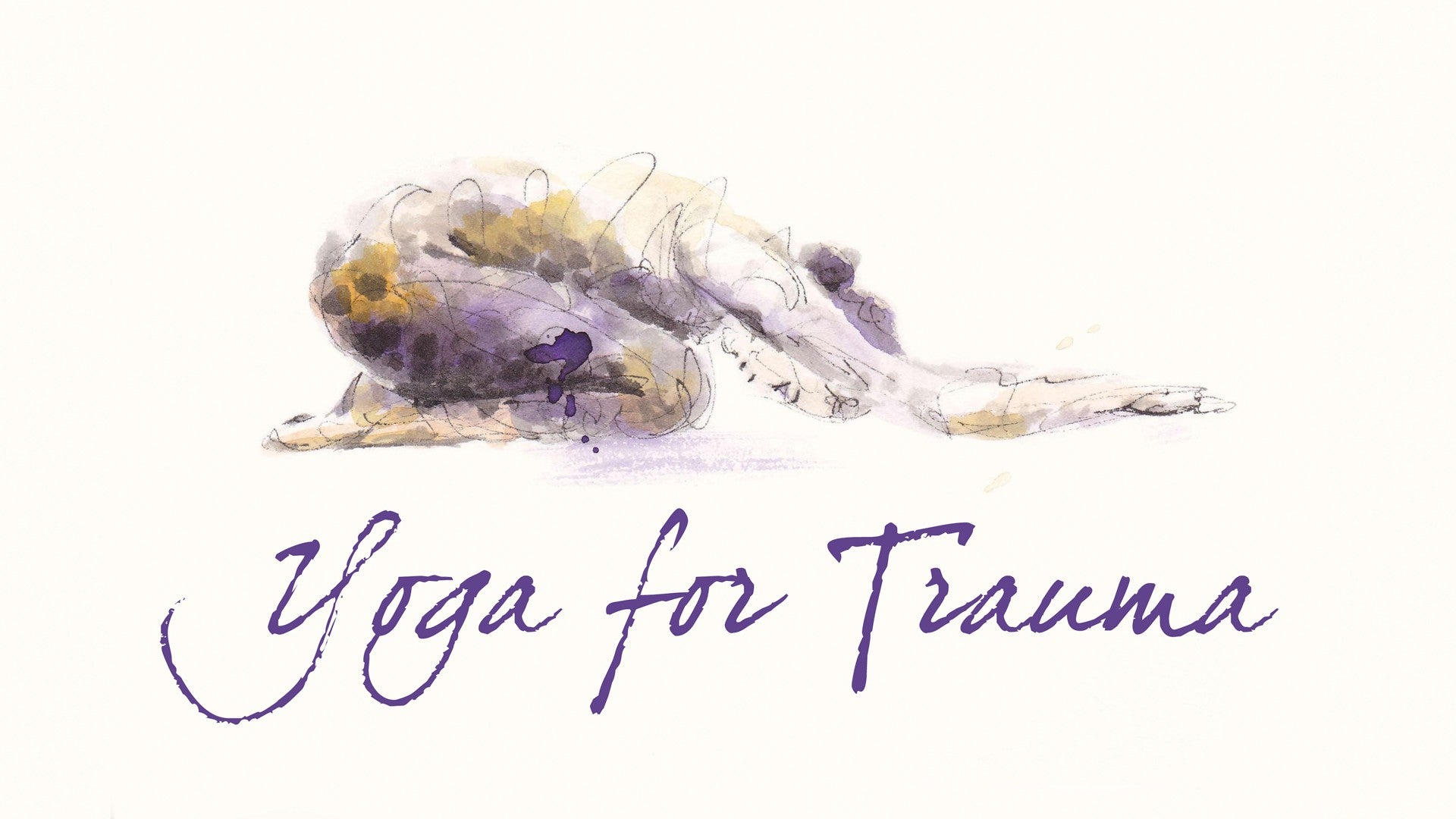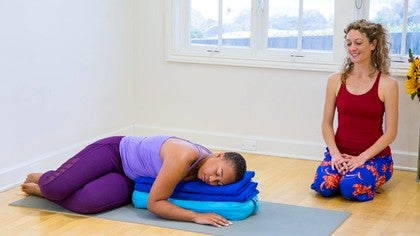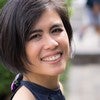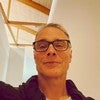Description
About This Video
Transcript
Read Full Transcript
Namaste and welcome. Thanks for joining me today with this practice. It's really designed to help us move from the extremes of imbalance into our more individually and unique spaces of center. Balance is a beautiful idea and so helpful to have as an aspiration, but it's really challenging to actually find. I find that often it's not actually very realistic and it brings out the idea of having to be perfectly in the center, perfectly in balance and have my work and family and practice and play and everything just right in the center. Really challenging sometimes and it brings out my perfectionist side and it brings out the judgment and often the shame that I can't achieve it. I often like to remember that it's great to hold as an ideal and there's this other experience. Even Mother Nature isn't able to be in balance all the time. There's pretty much only two times during the year at the equinoxes where it said that light and dark are balanced. Even throughout the seasons, there's constant growth and expansion and then there's contraction and release. What I want to invite you into today, during this practice, is maybe conceiving of the idea of balance as more of a cycle of process rather than a specific scale to be weighed. Keeping that in mind, I'm going to invite you to just take two clearing breaths to start your practice. It's going to be as deep or as shallow as feels natural to you. Let the breath come in and consider allowing the jaw to open on the exhale. One more time. Then bring your mind's eye to whatever is connected to earth and you are welcome to either close the eyes or just lightly let your gaze rest on something. Noticing if one side of the body or the other side is more grounded into earth, the idea of symmetry in the body is also a beautiful ideal and often unrealistic. Let's just own that. Just noticing. You might ask yourself, what is it today from this practice that you want to be reminded of? You want to connect more deeply to your body, mind and heart and in your life. It's at peace, self-compassion, kindness, courage. What is it that you need to remember? Let that be breathed into every single cell here. Now, as you feel ready, I'm going to invite you to move on to the back. If you are sitting on any props, shift them to the side. Go ahead and roll all the way down and let yourself stretch out long on the mat. Bring the legs together, flex the toes. You might interlock your fingers above and then press the arms away. Press the feet away. Bring in the breath and release. If that felt okay, let's do it again. Put the weird hand on top with your interlaced fingers. Press the palms away, really reaching the thumbs away from the head, the heels and inner ankles away from the body and releasing. Now we're going to bring the knees into the chest and just give yourself a little bit of a hug. Whether you've got a lot of judgment going on or just a little, make sure you're really embracing yourself with some kindness and some compassion here and roll the knees into a few circles. The lower back, with all it has to support, still gets love. Then roll in the opposite direction as well. Just a few circles. Nice. We're going to stretch the legs up towards the ceiling. If the backs of your legs are tight, feel free to keep them bent. That's okay. Just allow the lower back in the bones of the pelvis to really anchor down into the floor. Then we're going to point the toes and flex and point and flex and take the ankles into a few circles. Opposite. That's it. Nice. Let's shake them out a little bit. You might even reach the arms up and do a little shake like a bug on its back.
Then go ahead and release down. Let's move the feet directly underneath the knees. Here, we're going to pay attention to the lower back. Allowing the small of the low back to arch just a little bit. Then use your belly muscles to pull the navel down in the lower back towards the floor. I'll do that again. Arcing the back and then draw it down, really activating the deep belly muscles to help support this. We'll do this two or three more times. That's it. When the back goes down towards the floor, pause here. You might also imagine the space between your hip bones hugging in slightly towards each other. Again, deepening into that sashlight belt, the transverse that helps keep us stable and supported. Move the feet further forward about six to eight inches. Your back will naturally start to arch up for most of us. What I want you to do is bring the back back down, not so much that it's perfectly flat, but it's moving or at least grazing the top of your mat. We're going to keep the hips as still as possible and lift your right knee and then lower down. Super simple movement, but challenging to keep the stillness. Maybe imagining the hips hugging towards each other, drawing the back down. We'll do one more right here. Either continue with just that, and I'm going to suggest moving a little bit slower in order to actually get some activation into your center, into your core, or bring the hands to the base of the skull. As you do this, it's going to be creating more of a hammock for your head to rest in. Elbows wide, draw the back down towards the earth, lift the head and the heart. Now here, notice what you're trying to do this exercise, what muscles you're trying to do the exercise with. Right now, I realize my face is trying to control everything, so you might relax the face or the head into the hands and really reorganize into the center of you. Then lifting the right knee and tapping the toes down. We'll do this on the left side and tapping down. One more, keeping the hips as steady as possible, and of course they might move. You're human. Would it be okay to step out of the black and white thinking that you have to do it perfectly in order to be a good person? And then once you're up, you might even notice some shaking, go ahead and rotate towards the leg. Come back, settle down. Take breaks whenever you need to. This is a long time to be working that central muscle, and down. Reconnect the lower back to the earth, twisting, and down. Reconnect the lower back, stabilize through the hips, twisting, lower down, release the head, and take a breath in, open your mouth and shake the head a little bit side to side. I do a lot of sounding in my practice, meaning I make sound in my practice because it actually allows the nervous system to settle a little bit. Take the arms up overhead, and then drop the knees side to side. Dropping the knees side to side. You got it. If you notice any tension from that last set of movements in your neck, open the jaw, consider relaxing the tongue, let the neck move. Last one. I'm paying attention on purpose to your sensations, what's more alive, warm, settling, expanding. We're going to come up to sitting, and you've got a couple of options. You might bring one arm alongside of your ear, roll to the side, and then press up, or if you want to have a little fun, bring the hands behind the knees, chin into your chest, and little rocks. Yep.
Just a gentle massage for the spinal column. And if it's fun, keep going. I'm going to make myself stop. We'll come all the way up to sitting. Grab your blanket again, or your block, anything to sit on. Let the hips have a little bit of support. Yeah. There you go. And just with the neck, especially with everything we just did, drop the chin into the chest and let yourself reach the front of the neck up. One more time. Back to the center, looking over the right shoulder, keep the torso facing forward, and slowly through the midline. Uh-huh. One more time. Back to the center. Go ahead, drop right, this is my right ear, right ear towards the shoulder. Yeah. Come back to the center, left ear towards the shoulder. There may be a tendency for the side of the body to collapse. I want you to remember to press into the sitting bones. Create a little space in the side. Mm-hmm. Come on back up. No? Just small or big neck circles. Remembering that you are in control of the pace. You are in control of the intensity of this exercise, as well as all the other ones. You get to stop whenever you need to. Press pause, return when you're ready. Mm-hmm. To the center, and again, shoulder rolls. So the neural pathways that go from the base of the skull all the way through the heart and the lungs and the throat and up into the face and the eyes and the ears are that of our social engagement system. And when we can allow our bodies to smoothly and freely explore the space, particularly in the upper body, it sends messages to our brain that we're actually okay. All right? Nice. And lastly, we'll take the chest forward so we can get into the upper back and then hollow and round the upper back. Mm-hmm. Yep. So the shoulders roll back, the chest comes forward, and then that cave of the heart, which is really our back body, gets to stretch a bit. One more. See if you can exhale here.
Into the center. Head over shoulders, generally over hips, balancing. We're gonna take little circles around with the torso. So you might a bit feel like a weeble wobble, if you can remember those, rolling. That's okay. Or as you do this and get more comfortable with letting the spine articulate, you might allow just the upper spinal column to roll more. And then let's take it in the opposite direction. Around about four times in each direction. And as you tune in, notice if anything about this movement feels pleasant, sweet, smooth. And if it feels awkward or strange, just being aware of that because it'll come to an end. And notice the effects. Mm-hmm. Okay. So we're gonna switch onto our knees. Take the blanket, if you've been working with one, and place it underneath your knees for a little extra patty. Bring your hands under the shoulders. Knees generally under your hips. If the stance feels too small, it probably is. So stretch it out just a little bit. Mm-hmm. And now the knees a little bit closer together, stretch the right leg back. Okay. As the heel reaches back, consider lengthening in the opposite direction. This is a fine place to say because there's plenty of effort and awareness that can be drawn from it, especially if we start to hug our inner thighs towards each other. You may want to extend through the ball of the foot and lift the leg. That's another option. As you do that, try to remember what we first started with of lifting the navel up towards the ceiling now as opposed to the floor. And some of you might want a little extra work for your heart, and you can extend the opposite arm forward. Just going to hold for three more breaths with either arms and legs extended or just leg. Two. And that's about three. And then on the exhale, drawing everything in towards the midline. Again, reaching out and drawing in. Mm-hmm. Harnessing all the energy that we started to open up through the joints and reminding us that we can find balance and stability when we focus. And lower, lower the leg. Curl the toes under, spread the toes as wide as you're able to, and sit the hips back. You may need to keep your fingers on the floor if this is really intense. Otherwise, sit up for a moment. Breath in and out. And back down. Send the left leg back. If you notice the right hip sliding way out of the midline, hug the right hip in towards the center. Keep stretching back through the inner arch, lengthening forward through the crown. And then as you're ready, if you're ever ready, reach the back leg up. Again, it's an option, not an obligation.
Lower abdominals lifting towards the ceiling. Just to keep you balanced. If you'd like to add the arm there, feel free. That's for three. Two. Mm-hmm. And one. And the exhales are going to bring everything in towards your middle. And the inhales are going to reach out. Right. And you might do this with arm and leg or just the leg. And if everything seems wobbly, you are not alone. It's a process, right? And sending it out. Nice. Go ahead and lower down. Mm-hmm. And then sit on the heels. Again. Well, press over the feet. Take the feet about hip distance, if not a little wider. Keep a nice bend into the knees. Consider folding one arm over the other and allowing the head to release. Let some of the circulation, the blood flow, come down into the brain. Calming the mind. One more breath. So either releasing the arms and rolling up one vertebrae at a time or extending the heart forward and rising up flat back. Mm-hmm. Mm. Okay. So move the props aside. And actually, while we're here, we're going to bring the blocks, if you have them, to the front of the mat. Just leave them there ready for where we're going. Then into the center. Let's see how all this subtle movement and activity in the body is going to help us to kind of be upright and notice what we notice. I want you to mush a little bit. Get kind of collapsed. Yeah. And then we're going to press down and go in the opposite direction and see if you can really find rigidity. Whatever that means to you. And then again, mush. Mm-hmm. And coming on up and rigidity. Now try to find the space in between. So there's some weight down, but there's some activation also resisting. Yeah. Now here you go. Shift forward. Mm-hmm. Not so much that you're going to fall forward. So your feet are still on the ground. And just notice what's working here. Your body's not going to let you fall. And so what is keeping you from falling right now? How is the front of the body? Where are your hips in relation to your shoulders? What's your neck doing? Mm-hmm. Now we're going to move back through the midline and do the same thing in the opposite direction. Don't want to let yourself actually fall, but get to that edge where it's a little bit scary. Yeah. And just see right here what is keeping you from falling. Again, how are your hips in relation to your shoulders? What are your ears doing? The legs, the feet. Mm-hmm. One more time. Pass through that center line. Uh-huh. There you go. Something's turned on. Something's really sleeping. How's your breath? And we're going to go back. Notice where the weight is. Is it mostly in heels? Is there a gripping somewhere? Mm-hmm. Now find the place in between those two. Yeah.
Yeah. A friend of mine calls this the potent posture. There you go. Find your potent posture somewhere in between. It's not mush. It's not rigid. It's not forward. It's not back. Mm-hmm. And allow yourself to stand here for a moment. See what that's like. It's actually more efficient or less energy consuming to be in your alignment, to be in your balance, than to be out. Yeah. Okay. Then you might even consider bringing the hands together or trying this one with the thumb or the fingers all touching. Ancient practices say this helps balance the left and right hemisphere of the brain. If you slow down enough, notice if you can feel your brain. Yeah. And a few times, we'll reach the arms down and up. And again, if this is as far as you want to lift your arms, so be it. And back to home base. We'll reach all the way up, bringing the fingertips together and pulsing down. Two more times. Out and up. And down. One more time. See if you can remain in your potent posture even as you flow through these movements. Mm-hmm. We'll step to the front of the mat. So either hip distance or together. And again, take that same cycle all the way up as the feet press down. Hinge at the hips and bring the hands to the blocks or to your floor. Let the head bow. Look up halfway like a tabletop. And then we'll step the right leg back. Mm-hmm. If you're using the blocks, slide the blocks back so they're under the shoulders. We'll lift the hips a little higher. Sink the hips down lower beyond the midline. Mm-hmm. Lift the hips up. This time, rock back. Front leg straight-ish. And forward. Mm-hmm. Now, find the middle of all of that where the knees generally over the ankle. Right over the ankle.
Mm-hmm. And try to draw the crown of the head forward as you imagine drawing this front foot back. There you go. The lower belly alive. Take one more breath here. Mm-hmm. Consider placing the back knee down and just opening the collarbones. Full inhale. Nice. And exhale, straighten the back leg. We'll move the blocks the way for a moment. Place the hands. Step the feet back and the knees down. Knees are behind the hips. Drawing the lower back up towards the ceiling just as we kind of did when we were on the back. And lower all the way to floor. Three times. Lengthen the legs back and draw the chest forward. Lower. Tops of the feet, tops of the thighs really anchoring into earth. Roll the shoulders up, back, and down and draw heart forward. And lower. One more time. As big or as little as your cobras need to be at this moment for you. Right. Again, lift the lower abdominals up towards your spine. Press away and rock back. Step the right foot forward. Bring the block back. Back leg stretches straight and then lift the hips up away from midline. Sink them down. Lift hips. Rock the front leg straightish and come into a lunge. Now try to find center here where the knee is generally over the ankle. Front thigh, right thigh drawing back. Feet drawing towards each other as the crown of the head lengthens. Take a full deep breath here. Place back knee towards earth. Allow the collarbones to release open. And then stretch back leg straight. Step to the front and bow body in. On the in breath, rise up. Arms reaching out. Bring the fingertips together for Hakini Mudra and bring it back down. Take a full in breath and out breath. Just notice this. And then we'll reach again. Up. Flat back to lower. Drop the brain. Lengthen the spine. This time step the left leg back and we'll spin the back heel to the earth. I'm actually stepping a little wider than the first round. Wag your tailbone so it faces more of the back of your mat and then rise up through the middle. We're going to stretch the front leg straightish. Breath in. Open the arms. Here I'm going to ask you to try a little bit of the sound. So we'll breathe in and on the exhale, bend the knee towards your warrior pose and hug the arms in with a ha. Try that again. Opening. Bend the front knee. Hug the opposite arm on top. Ha. Again changing arms. Hold here with the embrace. Feel the feet into the floor. That front heel drawing towards the back of the mat. And maybe that lower back again drawing towards the back of the room. We'll stay here for two more cycles of breath. Either arms embracing or arms open. Last one. And then all the way up. And all the way back down. Place the back knee to the earth. Step front knee to meet it. Shift as you lift the belly and lower down. Inhale. One time. Lengthening up for your little back bend. And then lowering.
Inhale to lift. Step the left foot forward. Back leg straight. Make sure the stance is wide enough for your back. Back heel and front heel. Generally in alignment if not a little wider, wag the tailbone rise. All the way up and then front leg straightens. This time I'm really going to encourage you to take the arms wide apart. Find your cactuses. We're going to make actually a little bit of sound again on the exhale. So it's going to look like this and open. But we'll take a breath in and on our exhale, om. Om. In. Strong back leg. Om. One more. Om. And pausing in your warrior, try to sense the back body. Let your arms move to where they feel most in integrity with you. Might be open. That might actually be down. That might be high up. Last breath here. Great. And then release the hands down again to the blocks if you're using them. Step forward in breath. Bow on your out breath. Rise with your in breath. Find the hakini mudra again, fingertips touching, maybe bringing the thumbs to the heart. Eyes open or eyes closed. But notice what you notice. Just notice what you notice. Blood flowing. There might actually be a little rock forward and back. All the time our feet are almost never static. Our hands, when we're in a handstand, if we're in a handstand, are almost never static. There's micro movements constantly adjusting to keep us towards our center. Sending compassion to yourself in all the ways you make your micro movements to find more breath, to find more ease. Now let's take this awareness with us to our center. We're going to sit into a chair pose. You can do chair together with a big toes touching or feet hip distance. And let's hold arms open. Four, three, more weight into the heels. Life in that lower back. Two, one, and then come on back up. Take the feet hip distance now. We'll breathe in, sit down for a chair. Come back up to standing. Uh-huh. Be aware of the jaw and the tongue. If they're taking on tension, you don't need them. Two. Last one. Up. Holding. Lengthening. And then bow over the knees. Drop the head. We'll start to stretch the right leg straight-ish. You might also want to use a block for this one under your left hand. But stretch the left leg straight-ish. Sorry, stretch the right leg straight-ish and then you'll reach the right arm out. Let it keep rolling open until it's reaching out of your shoulder socket. Pause here. That top arm pressing into an imaginary wall. Spine reaching back. Crown of the head reaching forward. And now from the middle of you, allowing a gentle twist. Breath. And release. Relax the head. Shake the face out. As you do this, shift the block to your right hand. Keeping the right knee bent, start to straighten into the left leg. Reach the left hand forward, almost as if you were going to shake a hand. Let it keep rotating open. And pausing here. Drawing hips back. Pressing that top hand against an imaginary wall. Allowing your midsection to rotate.
And breathing here. So many of us deal with gut issues because of all the stress we have. It's a direct impact on our guts. The twist and the breath help massage this part of your body and then release. Releasing the head down. Flat back or rounding all the way up. And again, notice, especially with your head forward, blood pressure changes. Now, find a place in the room that won't move and let yourself just lightly gaze at it. We're going to shift the weight over to the left leg and just bring your right heel to the ankle. That's simple. It's like a little kickstand. Lower belly alive. Breath alive if possible. And hands maybe in the center. Steady the gaze. If the balance is really challenged, you might move to a wall and just place one hand onto a wall. That's always fine. If you need a break here, take a break. Last breath. Come back to the middle. Shake it out a little bit. Okay. Now just notice, if you can, all those thoughts that just went through those last few exercises. Postures. There's a lot of judgment. I didn't do it right. I can't hold this. My balance sucks. Blah, blah, blah. Just notice that with curiosity and compassion. And let's see if we can drop that chatter for a moment and just shift to the next side and to see what it would be like to test the waters of balance or imbalance here. So I'm starting with a kickstand, but of course you are always welcome to bring the leg up to the calf or up to the inner thigh for a tree. Oppositional energy of inner thigh pressing to the foot, foot pressing to the thigh, and the arms can reach to wherever they're going. Again, listening to not only the sensory experience of moving in and out of center, but the mental experience. Often the self-talk that takes us out of our center. Hear it, acknowledge it, and then come back over and over again. It's a process. Come on back. Last balance. We'll lift the thumbs forward. Turn the thumbs down, cross your right wrist, and interlace your fingers. Now hug it on in. Sit into your chair. We'll bring the right knee over the left knee. Try to draw the shoulder blades onto your back so there's a little lift in the middle of the body. Try to hug the legs in. Some of you might even float those right toes off the ground and sit a little deeper. Again, if you're managing this asana from your jaw or your face, how would it be to release that? How would it be to fall out of it? It's the flow. Then we're going to come back and find balance on two feet. Another side. Thumbs up, thumbs down. Cross the left wrist, interlace your fingers. Up and do a little hug. Sitting on down. Shoulder blades still stay on your back. Bring the left knee over. A little squeeze towards the middle. If you want to test the waters of lifting those toes up, yeah. Today, is it okay to balance? Is it okay to know you're in the process of learning balance, which requires sometimes falling and adding compassion to all of it? Last cycle. Back out. You may have that natural rock or rhythm.
I don't know, but it might be your life force moving through you. I'm going to step to the front of the mat and one more time, move with our breath down to earth. Lifting forward. Rising and then stepping back. Lower all the way down to the ground. We'll take a moment here just to rest. Maybe allowing your whole system to release. Then we'll slide the arms back alongside of the legs. Activate your legs. Pressing the tops of the thighs down. You might lift the lower belly towards the spine and lift your upper body. Think about length more than height. Consider allowing the legs to float off the ground, but still reaching back and reaching forward through the crown. We'll be here for about four more cycles of breath. You can either keep the hands down or lift them up as if they're reaching towards the feet. Interlocking the fingers. Gently bent elbows drawing back. Last breath. Then lower. Turn the head to one side. Then press back to your child's pose. For many of us, child's pose doesn't feel quite comfortable because the head's down. If that's the case, prop up the head in your hands or maybe fist on top of fist and rest your forehead there. This shape has a unique opportunity for you to explore how the breath feels moving through your back body, calming your system. We'll rise up and find our way onto our backs. Lowering down. Bringing the left ankle over the right. This might be enough sensation right here.
Try drawing the left thigh forward, dropping the sitting bones down. If this is okay, you're feeling something, stay here. If you'd like a little bit more sensation, lift the right knee towards the chest, hold onto the back of the thigh and draw it in. The hips will drop down, left leg moving forward. As we get into the energy of the hips, also be aware of what's happening through the jaw, through the neck, through the throat. You may even want to take a little lion's breath here of sticking the tongue out and stretching the face. One more cycle of breath. Release the hands, lengthen the legs up, bend your knees, feet onto the floor. Right ankle on top of left knee. Draw the right thigh forward. If this is enough, stay here. If you'd like to access more sensation, go ahead and start to move the legs in closer. Remember, you have control over this. Feel free to let the sitting bones release down. Try keeping the feet flexed just to protect the knees. If you could remember what it was you wanted to connect more deeply to in this practice today, be it courage or peace or kindness, whatever just arose for you. See if you can breathe that back in right now. Just a remembrance of that. One more cycle. Releasing the legs up, give them a little shake and lower them down. We'll set up now for final rest. If you're comfortable here on your back, consider staying. You might even place a blanket underneath your knees and you might explore what it's like to have a blanket just over your midsection and your hips either open or double folded. Your hands can be anywhere on your body, extended. Just allow yourself to find a shape where you can rest and feel more settled. Now for some of us, being on our backs is just not an option at all, in which case you'll roll over and find yourself back up to sitting. It's also always an option to prop yourself up against the wall to have that support. If you're sitting, make yourself comfortable enough to stay here for about three minutes or so. Wherever you're at, noticing the support that's rising up to hold you. You may give yourself permission to even let go a little bit to let some of the tension through the muscles, through the face, the arms, the legs, the torso melt down. Trying to keep our balance often does bring out these perfectionist tendencies or the busier or the more productive and the more efficient we can be. We start to internalize it as us being better people, when in reality you are already a luminous being of excellence as is. Letting go of some of the hyperdrive. Letting go of maybe it's presenting in your life more chaotically than perfectionism and letting go of anything that might be surrounding it that's not serving you. Consider even letting the tongue spread and release in the mouth, the inner ears start to soften and the eyes settle back. Consider giving yourself permission to just be unconditionally just be. I'm going to be quiet for the next minute and let you rest here. Now as you feel ready, you can either continue to just rest and come out on your timetable or you might start to take this as a cue to bring in more conscious awareness of your fingers and toes. Take all the time you need to return to your seat. Once there, pause again and just notice your inner experience. Bring the hands together and bowing in to your heart, your mind, your body. Taking a deep breath in and out. Namaste. Thank you.
Yoga for Trauma
Comments
loveandpeacexxxx
You need to be a subscriber to post a comment.
Please Log In or Create an Account to start your free trial.



















